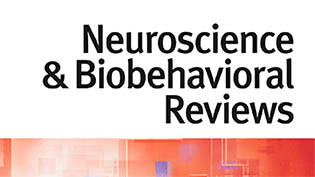Using Convolutional Neural Networks to Examine Structural Abnormalities in Schizophrenia
Authors: Sandra Vieira, Walter HL Pinaya, Andrea Mechelli*
Journal: Schizophrenia Bulletin
DOI: 10.1093/schbul/sbx024.078
Abstract: Deep learning (DL) is a family of machine learning methods that has gained considerable attention in the scientific community, breaking benchmark records in areas such as speech and visual recognition. DL differs from conventional machine learning methods by virtue of its ability to learn the optimal representation from the raw data through consecutive nonlinear transformations, achieving increasingly higher levels of abstraction and complexity. Initial applications of deep learning in neuroimaging studies of psychiatric populations, including schizophrenia, have yielded promising results. Convolutional neural networks (ConvNets) is a particularly promising deep leaning model that has yet to be tested in schizophrenia. The aim of this study was to (1) investigate how consistent is the performance of ConvNets when applied to structural MRI data to identify individuals diagnosed with schizophrenia from healthy controls and (2) examine what brain regions best contributed to distinguish the 2 groups. Methods: Four independent data sets (Site 1: SZ = 58, HC = 58; Site 2: SZ = 136, HC = 139; Site 3: SZ = 72, HC = 70; Site 4: SZ = 44, HC = 44) with T1-weighted MRI images taken from individuals diagnosed with schizophrenia and healthy controls were used. The performance of the ConvNets models was assessed using a 20-fold cross-validation scheme, with 100 iterations within each fold. In each fold, 80% of the images were used for training, 10% for the test set, and another 10% validation set. A drop-out layer as well as L2 and L1 regularizers were used to help preventing overfitting. Results: The best solutions yielded accuracies of 71%, 69%, 65%, and 64% for the 4 data sets. After merging all datasets, the best performance for the total sample (SZ = 310, HC = 311) was 70%. The regions that provided the greatest contribution to classification were the temporal cortex (left superior temporal lobe, left middle temporal lobe, and left fusiform gyrus), the limbic-paralimbic cortex (hippocampus, parahippocampal gyrus, left insula), subcortical structures (putamen, caudate, and right thalamus), and the cerebellum. Conclusion: In conclusion, ConvNets showed a moderate yet consistent performance across the 4 data sets as well as for the combined data set, suggesting good replicability. The most informative regions for the classification are consistent with the existing literature on structural abnormalities in schizophrenia. Taken together these results suggest that ConvNets could become a potentially useful and reliable approach in the search for neuroanatomical biomarkers of schizophrenia.
